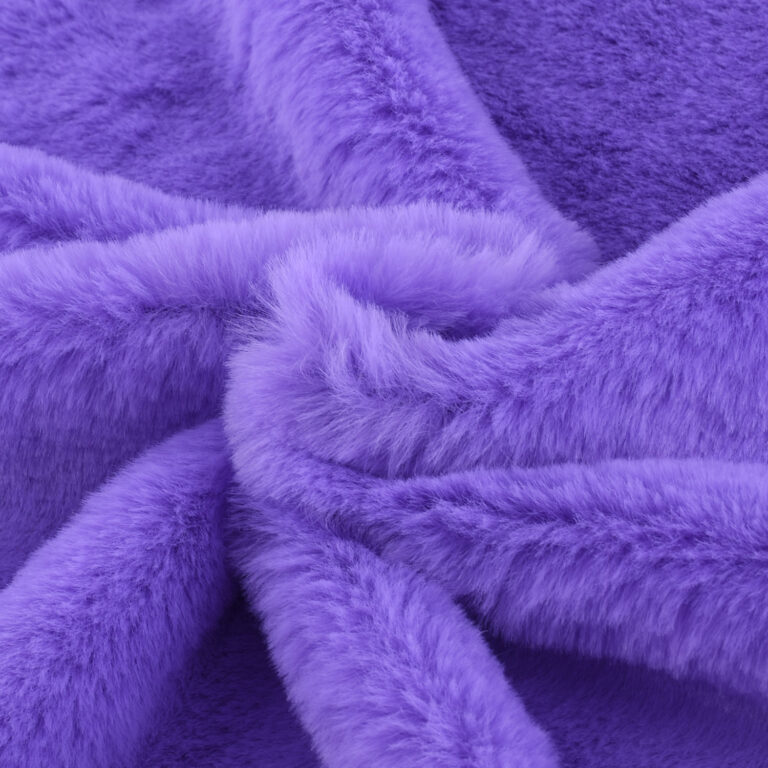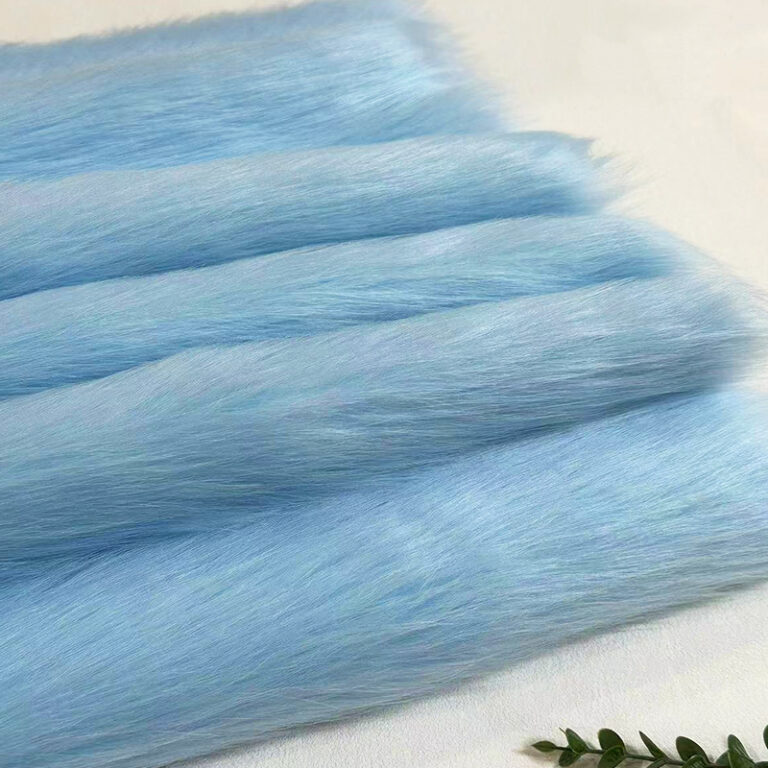The fashion industry is undergoing a quiet revolution, driven by a demand for opulence that aligns with ethical values. At the forefront of this shift is Plain Faux Fur Fabric—a material redefining luxury by blending sophistication with sustainability. No longer confined to seasonal trends or niche markets, this innovative textile is reshaping wardrobes, runways, and consumer mindsets. Here’s how it’s rewriting the rules of modern fashion.
The Ethical Evolution of Faux Fur
For decades, animal-derived fur symbolized status, but growing awareness of ethical and environmental concerns sparked a seismic change. Plain Faux Fur Fabric emerged as the antidote, offering guilt-free indulgence without compromising on elegance.
From Controversy to Innovation
Early faux fur iterations faced criticism for plasticky textures and poor durability. Advances in textile technology, however, transformed these limitations. Modern Plain Faux Fur Fabric mimics the density and softness of natural fur through precision-engineered fibers, often using recycled polyester or plant-based materials. The result? A cruelty-free alternative indistinguishable from its animal counterpart.
The Role of Consumer Activism
Millennials and Gen Z buyers prioritize brands that reflect their values. Social media campaigns and documentaries exposing fur industry practices accelerated the decline of traditional pelts. Today, 72% of luxury shoppers under 40 actively seek Plain Faux Fur Fabric products, viewing them as symbols of progressive, compassionate style.
The Science Behind Plain Faux Fur Fabric
What sets Plain Faux Fur Fabric apart is its marriage of artistry and cutting-edge science. Designers and engineers collaborate to create textiles that outperform animal fur in both aesthetics and functionality.
Fiber Technology Breakthroughs
High-density knitting techniques allow Plain Faux Fur Fabric to replicate the layered structure of natural fur. Each synthetic strand is tapered to mimic guard hairs and underfur, achieving a luxuriously dense pile. Innovations like heat-resistant treatments enable dyeing without fiber damage, yielding vibrant, long-lasting colors.
Sustainability-Driven Production
Leading manufacturers now prioritize circularity. Plain Faux Fur Fabric is increasingly made from post-consumer plastics, ocean waste, or biodegradable blends. Waterless dye processes and solar-powered factories further reduce environmental footprints, making it a cornerstone of eco-conscious fashion.
Redefining Luxury Aesthetics
Plain Faux Fur Fabric isn’t just an ethical choice—it’s a design powerhouse. Its versatility empowers designers to explore bold silhouettes while maintaining a timeless appeal.
Minimalism Meets Glamour
The “plain” in Plain Faux Fur Fabric refers to its understated, single-toned finish, which contrasts with traditional patterned furs. This simplicity elevates its versatility. A monochrome faux fur coat pairs equally well with jeans or an evening gown, embodying a “quiet luxury” ethos favored by modern tastemakers.
Texture as a Statement
Designers leverage the fabric’s plush texture to add dimension to minimalist collections. From shearling-inspired jackets to sleek faux fur trim on accessories, Plain Faux Fur Fabric introduces tactile richness without overwhelming visual balance.
Functional Advantages Over Natural Fur
Beyond ethics, Plain Faux Fur Fabric outperforms animal fur in practicality, making it a savvy choice for contemporary lifestyles.
Durability in Diverse Climates
Natural fur requires meticulous care to avoid damage from humidity or pests. Plain Faux Fur Fabric, however, resists moisture, mold, and moth infestations. Machine-washable options simplify maintenance, appealing to busy urban dwellers.
Lightweight Comfort
Animal pelts can feel heavy and restrictive. Plain Faux Fur Fabric reduces weight by up to 40% through advanced hollow-core fibers, offering warmth without bulk. This makes it ideal for travel or layering in unpredictable weather.
The Cultural Shift Toward Conscious Consumerism
The rise of Plain Faux Fur Fabric mirrors a broader societal move toward mindful consumption. Luxury is no longer defined by exclusivity alone but by its alignment with personal and planetary well-being.
Influencing High Fashion and Fast Fashion
Luxury houses like Stella McCartney and Gucci now champion Plain Faux Fur Fabric in their collections, while high-street brands like H&M and Zara make it accessible to mass markets. This dual adoption bridges the gap between aspirational and attainable sustainability.
The Psychology of Ethical Indulgence
Psychologists note that purchasing Plain Faux Fur Fabric satisfies a dual desire: the thrill of acquiring something luxurious and the pride of making an ethical choice. This “guilt-free dopamine” reinforces its popularity among values-driven shoppers.
Beyond Apparel: Expanding Applications
The influence of Plain Faux Fur Fabric extends far beyond coats and stoles. Interior designers and accessory makers increasingly adopt it to infuse everyday items with ethical luxury.
Home Décor Revolution
Throw blankets, pillow covers, and even upholstery featuring Plain Faux Fur Fabric add warmth to living spaces. Its hypoallergenic properties make it safer for households with children or pets compared to natural fur.
Accessory Innovation
Handbags, shoe linings, and hat trims utilize Plain Faux Fur Fabric for tactile contrast. Designers praise its ability to elevate simple designs into statement pieces through texture alone.
Debunking Myths About Faux Fur
Despite its growth, misconceptions about Plain Faux Fur Fabric persist. Addressing these myths is key to its continued adoption.
Myth 1: “It’s Less Eco-Friendly Than Real Fur”
Studies show that producing Plain Faux Fur Fabric generates 30% fewer carbon emissions than mink farming. With recycling programs and biodegradable options, its environmental impact shrinks further.
Myth 2: “It Lacks Prestige”
Collaborations between faux fur brands and high-profile designers have shattered this notion. Plain Faux Fur Fabric now graces red carpets and editorial spreads, cementing its status as a luxury staple.
The Future of Plain Faux Fur Fabric
As technology advances, Plain Faux Fur Fabric evolves from a substitute to a standard. Emerging trends include:
Bio-Based Innovations: Algae and mushroom-derived fibers for 100% biodegradable faux fur.
Smart Textiles: Temperature-regulating Plain Faux Fur Fabric that adapts to weather conditions.
Customization: 3D knitting allows consumers to design bespoke faux fur patterns at home.
A New Era of Responsible Glamour
Plain Faux Fur Fabric represents more than a material—it’s a manifesto for modern luxury. By rejecting outdated practices and embracing innovation, it proves that fashion can be both beautiful and benevolent. As consumers and creators alike rally behind this textile, they’re not just wearing a trend; they’re championing a future where style and ethics coexist without compromise.


